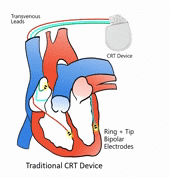
Technological advancements in wireless body area networks have led to the development of many implantable and wearable medical devices and systems. These developments also have driven the transformation of decades-old wired cardiac pacemaker technology into wireless leadless technology. These new leadless cardiac pacemakers are less invasive e.g. avoids lead-related complications while providing proper diagnosis and treatment.
Besides the unquestionable benefits of leadless pacemakers, there are also new concerns associated with them. One of the key issues is to protect a life-saving device from intruders and eavesdroppers. Successful eavesdropping may result in retrieval of patient information (medical and non-medical) and aid in performing attacks like denial of service and data altering. Thus, the wireless nature of these devices could be a significant security risk. Therefore, secure communication is considered an integral part of the next generation of leadless pacemakers.
With the advent of physical layer security (PLS) methods, confidential messages can be transmitted without the use of encryption keys (keyless security). For analyzing the effectiveness of PLS for next-generation leadless cardiac pacemakers, this study provides secrecy analysis using a performance metric of secrecy capacity. Secrecy capacity defines the secure transmission rate between legitimate nodes without leakage of information to an eavesdropper (Eve) and depends on respective channel attenuations. Secrecy capacity in three dimensions around the human body was evaluated by performing electromagnetic simulations and experimental measurements (phantom and in-vivo). The results prove the hypothesis that the human body as a lossy medium for electromagnetic propagation inherently provides high attenuation to off-body Eve link, thus offering legitimate nodes an advantage on the physical layer for implementation of keyless security. Moreover, the angle of maximum information leakage was also evaluated by considering the human heart as a reference position and we termed it as “Eve sweet spot angle”.
The overall study helps in the design of the communication module of implanted leadless cardiac pacemakers with enhanced security on the physical layer.

